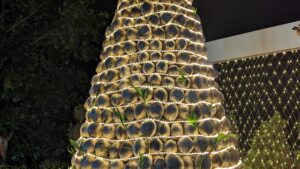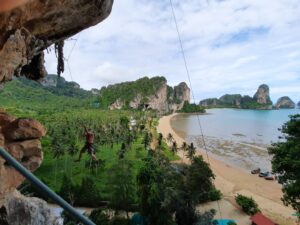Have you ever heard of bioluminescent plankton? These tiny organisms can produce a magical, glow-in-the-dark phenomenon in the ocean. It is a type of plankton that produce light through a chemical reaction within their bodies.
They play a crucial role in the marine food chain as a food source for other organisms, and they also help to regulate the carbon cycle by converting CO2 into organic matter. Additionally, this plankton attract other predators, which can help their offspring’s dispersal.
Thailand’s warm water lagoons are home to one of the largest bioluminescent plankton populations in the world! One of Thailand’s most popular places to see these creatures is the waters around the islands in the Andaman Sea.
Here, you can take a boat tour that takes you into the night to witness the breathtaking sight of the glowing plankton and those luminous blue hues in the water.
Bioluminescence and its Mechanism
Bioluminescent light is a natural phenomenon produced by a living organism. It produces light through a chemical reaction between a light-emitting molecule called luciferin and an enzyme called luciferase, which is present in the plankton’s body. When these two substances combine, they produce light.
Types of Bioluminescent Plankton and How They Differ
There are two main types: dinoflagellates and coccolithophores. Dinoflagellates are single-celled organisms that are found in both marine and freshwater environments, while coccolithophores are a type of algae that are found primarily in marine environments.

Factors Affecting the Bioluminescence of Plankton
Several factors can affect the bioluminescence of plankton, including water temperature, nutrient availability, and the presence of predators or other environmental stressors.
Description of the Glow-in-the-Dark Phenomenon
The glow-in-the-dark phenomenon produced by these planktons is nothing short of magical. As the plankton moves through the water, it leaves a trail of shimmering light in its wake, creating a stunning natural light show.
The effect is even more pronounced when the water is disturbed, such as by a boat or a swimmer, as the plankton release more light in response to the disturbance.
That makes for one of the most amazing swimming experiences tourists can have. But just seeing those glowing waves due to the bioluminescent algae, “sea sparkle” as they are known, as you bask under the new moon, is just one-of-a-kind.
Visual Appearance of Bioluminescent Plankton
The visual appearance is unique. Depending on the type of plankton, the glow can range from a bright blue-green color to a more subdued yellow-green. Some species also produce a red glow, although this is rare.
When viewed up close, the individual plankton appears as tiny, glowing specks in the water, creating a mesmerizing and magical effect.
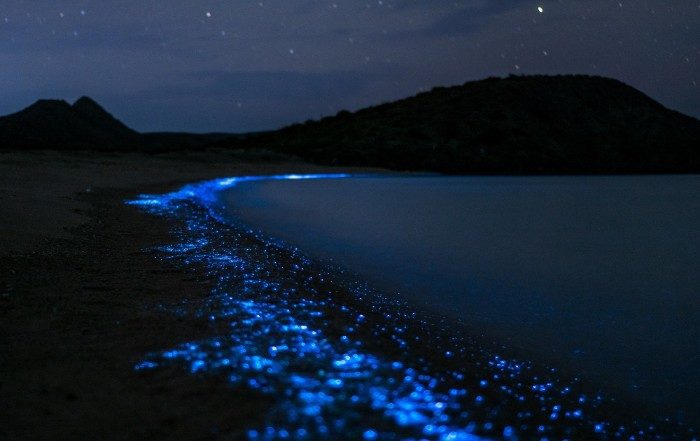
Occurrence and Distribution
Various factors, including water temperature, nutrient availability, and other environmental factors, can influence its occurrence and distribution. In the islands of Thailand in Krabi and Ton Sai, the warm waters and abundant nutrients make for a prime habitat for these unique organisms.
The Role of Bioluminescent Plankton in the Food Chain
Bioluminescent plankton play a crucial role in the marine food chain. The plankton is a primary food source for many tiny marine organisms, such as krill, which serves as prey for larger predators such as fish and whales. Without the plankton, the entire ecosystem balance might be affected.
Relationship with Other Marine Organisms
Bioluminescent plankton have essential relationships with other marine organisms. Some squid species use them to attract prey, while others use their bioluminescence to evade predators. Additionally, some fish are attracted to them and use their glow to navigate and communicate with each other.
Importance in the Marine Ecosystem
In addition to their role in the food chain and their relationships with other marine organisms, bioluminescent plankton also have broader ecological importance. They help regulate the ocean’s balance of nutrients and play a role in the carbon cycle, which has implications for global climate change.
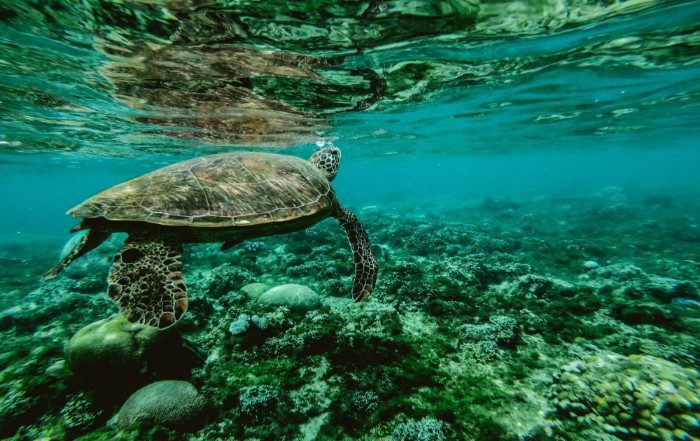
Their ability to produce light is currently under study for potential use in medical and technological applications.
Bioluminescent Plankton and Human Activities
Human activities such as tourism, fishing, and shipping can significantly impact bioluminescent plankton. For example, excessive light pollution from boats and waterfront developments can interfere with their bioluminescence, making it difficult for them to attract prey or communicate with each other.
Effect of Climate Change and Pollution
Climate change and pollution are also significant threats to bioluminescent plankton populations. Rising sea temperatures can alter their distribution and abundance, while ocean acidification can impact their ability to produce bioluminescence.
Additionally, pollution from plastic debris and other sources can harm these delicate organisms, further impacting their health and survival.
Plankton Conservation Efforts
Efforts to conserve bioluminescent plankton in Thailand and around the world are ongoing. Some conservation measures include reducing light pollution from boats and other coastal developments, regulating fishing practices to minimize bycatch, and reducing plastic waste that can harm marine life.
Educating the public about the importance of these organisms and their role in the marine ecosystem is critical to promoting their conservation.
How Bioluminescent Plankton Impact Thailand’s Tourism
Tourism is a vital component of Thailand’s economy, and the country’s stunning natural beauty plays a significant role in drawing visitors worldwide. One natural wonder recently gaining popularity among tourists is the bioluminescent plankton, which emits a stunning blue light that illuminates the sea.
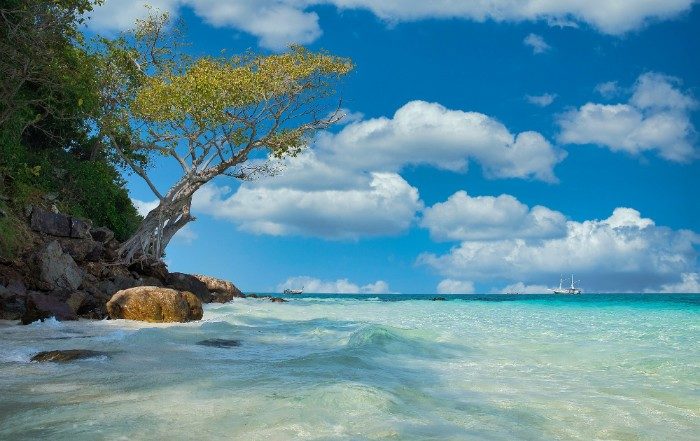
The glowing plankton has become a significant attraction for tourists, particularly those visiting the southern beaches of Koh Rong and Koh Rong Sanloem.
Popularity in Thailand
The bioluminescent plankton in Thailand has become a popular tourist attraction in recent years. These tiny organisms emit a beautiful neon blue light illuminating the sea, creating a stunning visual display that draws visitors worldwide.
You can see the plankton for yourself by taking a sunset tour that includes a post-sunset evening segment. Our 4 Island Sunset Cocktail Cruise includes swimming in the bio-luminescence after dark. It mmust be noted that the brightness of the plankton is affected by different natural factors. For example, a full moon will make for a brighter sky, meaning the plankton visibility tends to be reduced. However, those that take the plunge into the waters with a snorkel mask will still be treated to an incredible underwater light show!
Economic Impact on Thailand’s Tourism Industry
It’s popularity has a positive impact on Thailand’s tourism industry. Tourists flock to see the glowing plankton, generating revenue for the local economy through hotel bookings, tours, and other activities. In addition, their presence can help to promote Thailand as a unique and exotic destination for travelers.
Responsible Tourism Practices
While they can be a magical experience and draw tourists, promoting responsible tourism practices to protect these delicate organisms and their habitats is essential.
Tourists must know the importance of minimizing their environmental impact by avoiding activities such as swimming at night or using bright flashlights that can interfere with the plankton’s bioluminescence.
Tour operators and other businesses should also be encouraged to adopt sustainable practices that minimize their impact on the marine ecosystem.
The plankton in Thailand has become a popular tourist attraction, contributing to the country’s tourism industry and economy. However, it’s essential to promote responsible tourism practices to protect these delicate organisms and their habitats, ensuring they continue to thrive for future generations.

Final Thoughts
The bioluminescent plankton is stunning and crucial to the marine ecosystem. The fantastic organism serves as a food source for various marine organisms and is essential to the ocean’s health. In addition, its beauty has become a significant tourist attraction, contributing to Thailand’s tourism industry’s growth.
However, balancing economic benefits and preserving its fragile ecosystem is crucial. Continued research is essential to deeply understand their behavior, distribution, and ecological significance and ensure its conservation.
Don’t miss out on the opportunity to witness the glowing plantkon for yourself during your visit to Krabi, Thailand. Take a Krabi Sunset Cruise around the Railay Peninsula, watch the sunset over the Andaman and finish off your trip with a swim in the waters with the bioluminescent plankton next to Pranang Beach.

